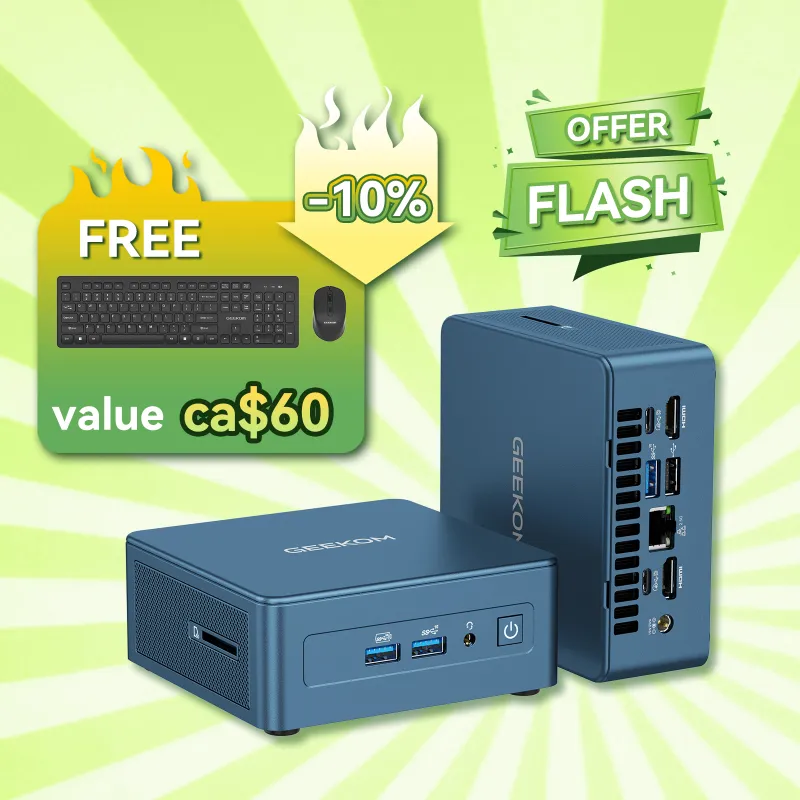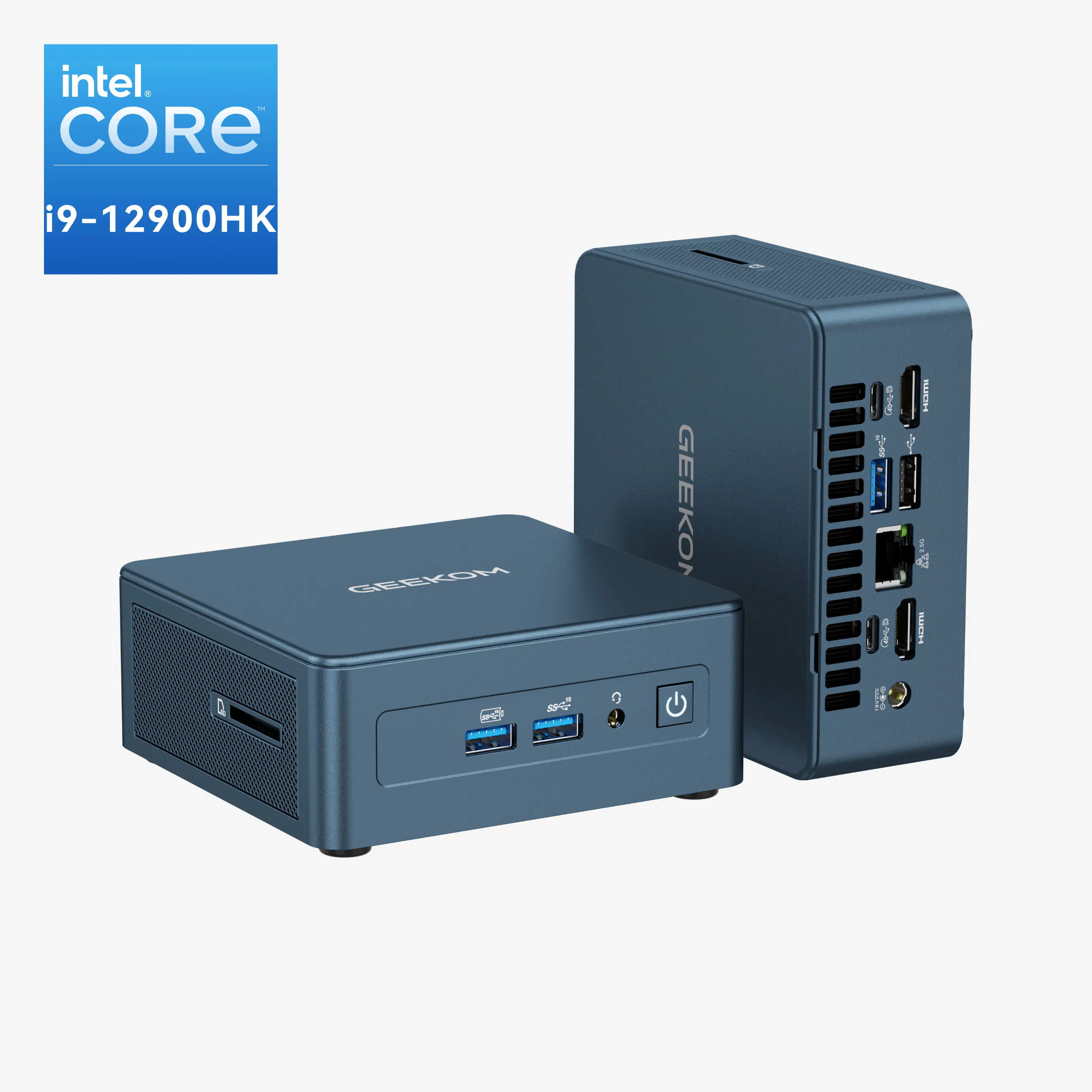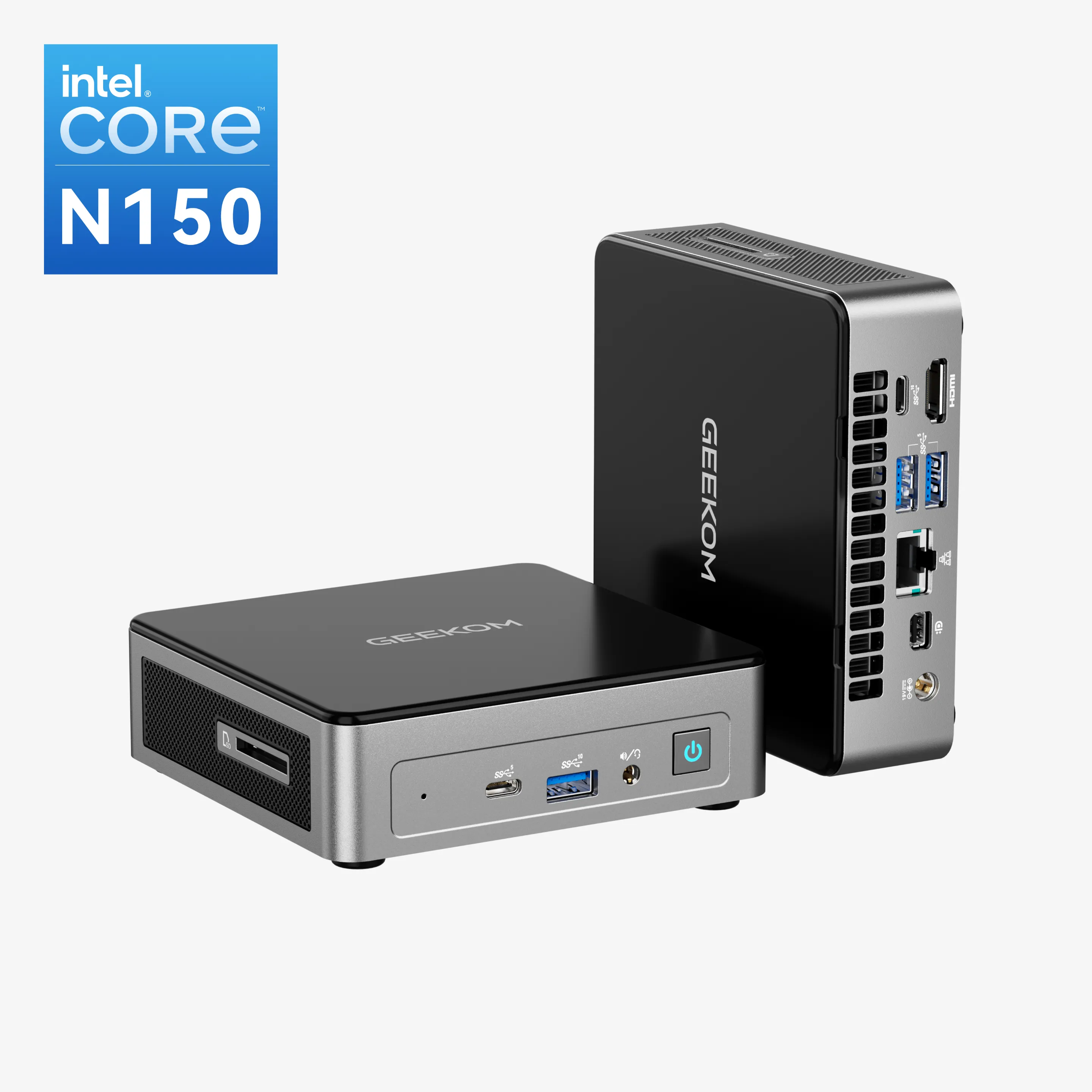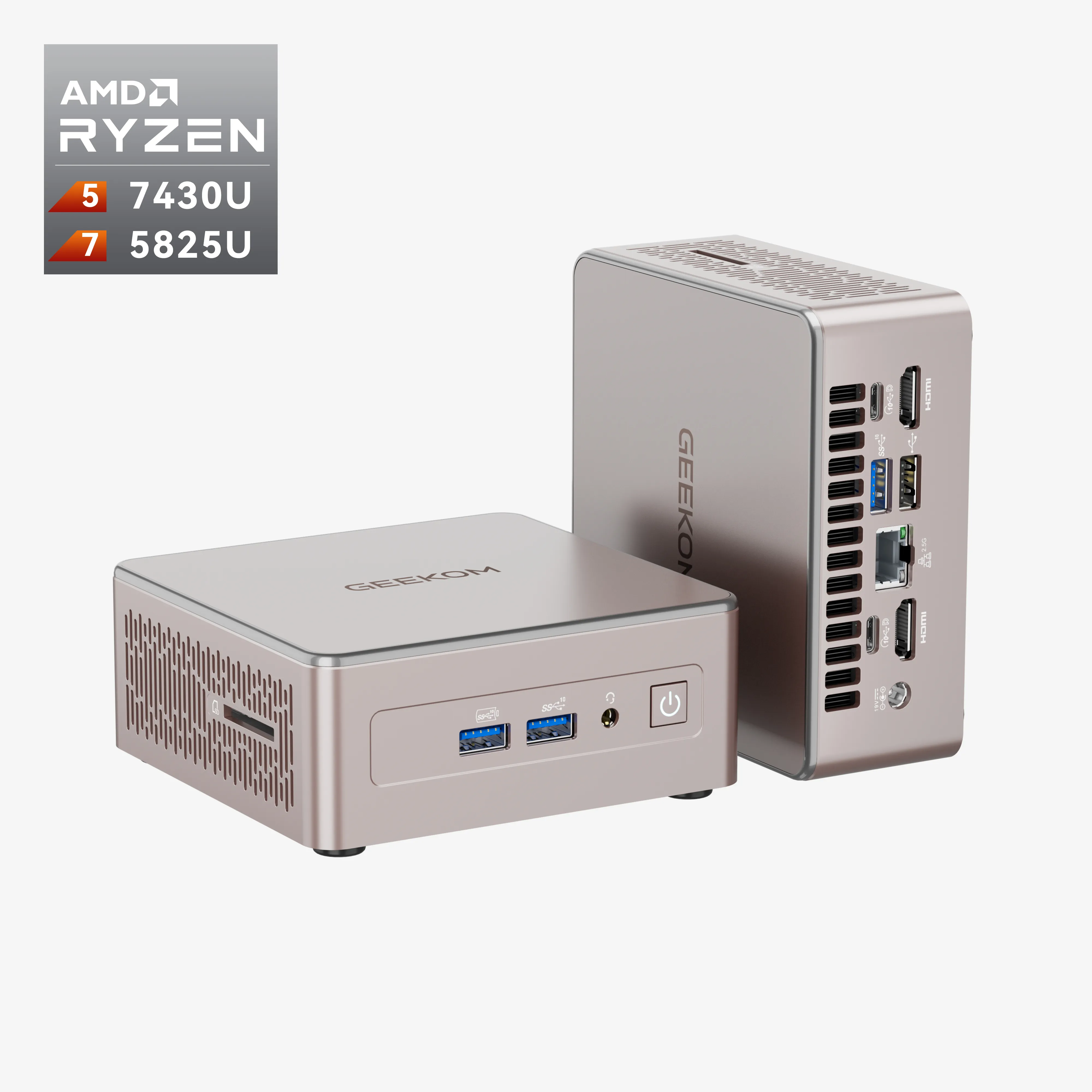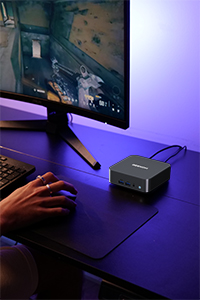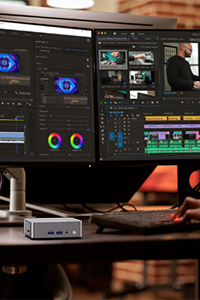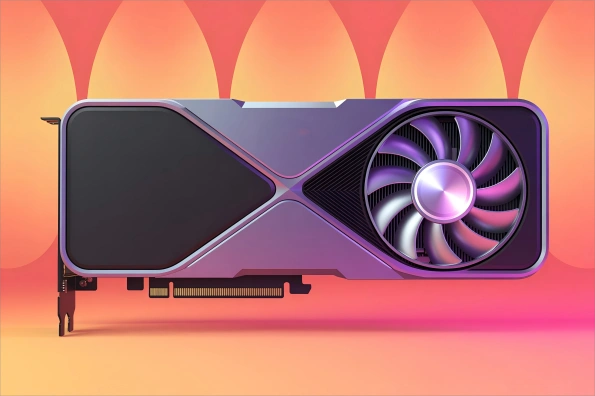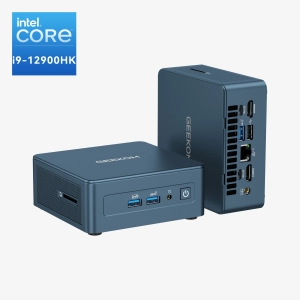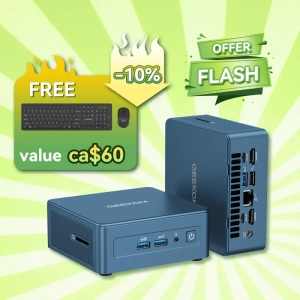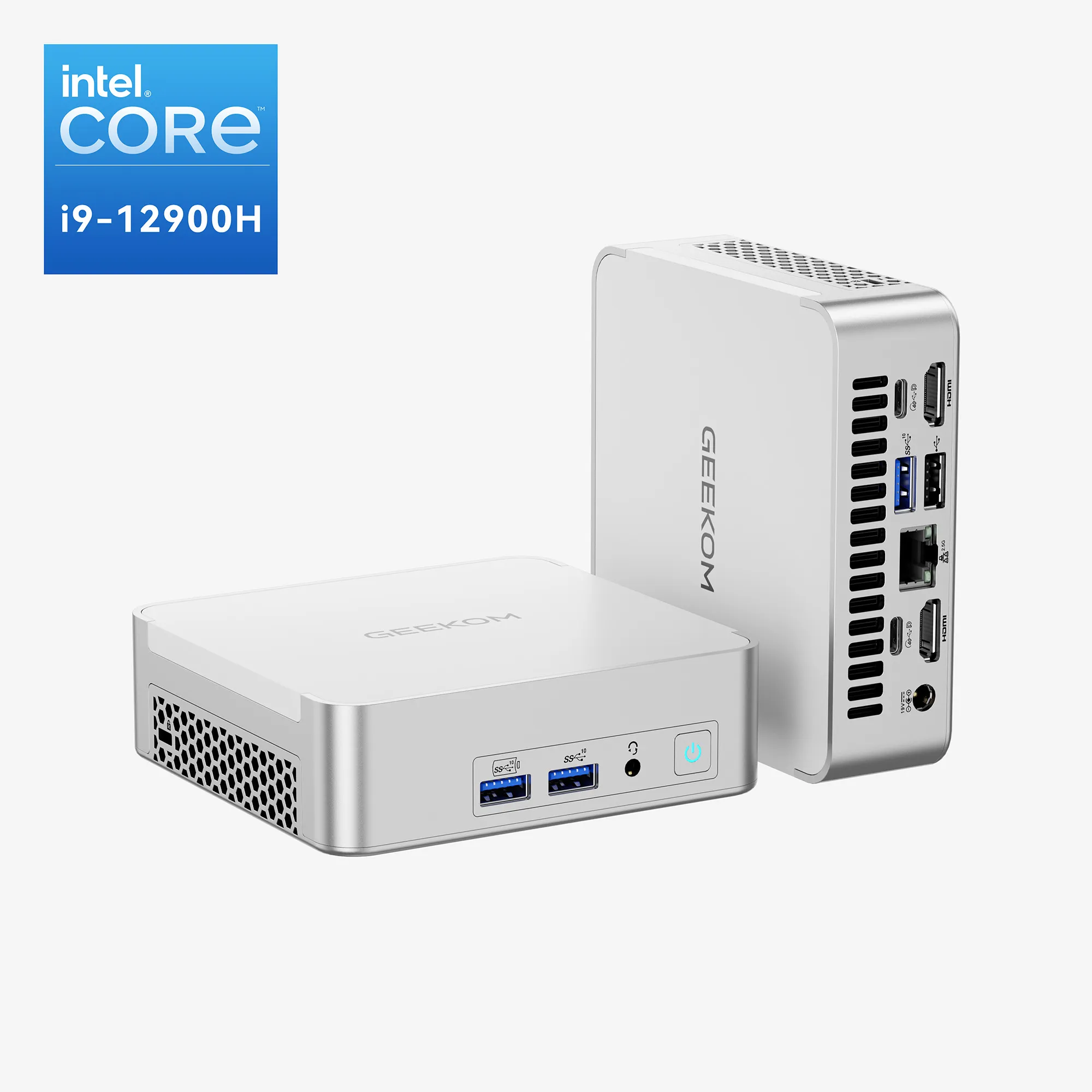The RTX 50 from Nvidia’s newest line uses Blackwell architecture and has up to 32GB of fast Osiris memory and better AI cores. By making more than one AI frame per rendered frame on the 50 series GPUs, DLSS 4.0 and multi-frame generation improve FPS. NVIDIA’s newest technology uses VRAM more efficiently thanks to AI-driven texture compression, which makes graphics effects better.
Because it is based on RDNA 4, AMD’s Radeon RX 9000 series competes with NVIDIA’s GPUs in terms of better raytracing, AI acceleration, and 16GB VRAM. AMD’s open-source upgrade utility uses FidelityFX Super Resolution 3.1 (FSR 3.1) to boost fps and image quality across platforms without using extra hardware. The newest model from AMD has 16GB of video memory and can play games in 1440p.
In line with the rest of the industry, Intel’s Arc Battlemage GPUs are switching to GDDR7 memory to appeal to a wider range of buyers.
With AMD and Intel CPUs, integrated GPUs can now perform as well as low-end discrete graphics cards. The latest laptops and mini PCs with built-in graphics work great with AI creative programs. Integrated GPUs with a lot of power may be available in the future.
Graphics cards are getting better this year. When it comes to high-end gaming and AI re-rendering, GDDR7 is quickly becoming the standard. It has 60% more bandwidth than its predecessor. AMD has kept its VRAM size and speed competitive, but Nvidia and Intel are now moving ahead of it.
Here are the Best Graphics Cards of 2025
| GPU Model | Price Range | VRAM | Ray Tracing Performance | Rasterization Power | AI Upscaling Tech | Target Resolution |
| Nvidia RTX 5090 | $1,999 | 32GB GDDR7 | Industry-leading, DLSS 4.0 with Multi Frame Generation | Ultra-high (4K max settings) | DLSS 4.0 (AI-based) | 4K and beyond |
| Radeon RX 9070 XT | $700-$800 | 16GB GDDR6 | Improved RDNA 4 ray tracing, FSR 4 (AI-enhanced) | High (1440p to 4K) | FSR 4 (AI upscaling, RDNA 4 only) | 1440p to 4K |
| Intel Arc B580 | $249 | 12GB GDDR6 | Competitive ray tracing, XeSS AI upscaling | Mid-range (1080p to 1440p) | XeSS (AI-based) | 1080p to 1440p |
Complaints about the NVIDIA RTX5090 being too hot are many. I was a fan of the GPU until the heat started to fry my RAM. The 32 GB GDDR7 and Blackwell architecture really help in solving what you call the “computing headroom” issue. The simple question now becomes, is NVIDIA feeling the pressure from AMD that they have taken the time to test the risky road of liquid cooling?
Although the price of a product that conditions it within the scope of enthusiasts surpasses my financial means, and its energy requirement is so big that it makes it necessary to choose the components of the system cautiously (for instance, it’s better to have a PSU with a power output of not less than 850W). The thing is, in parallel with a better choice for those people who are exclusively using the AI-assisted workflow for image and video production (a lot more interestingly, the card, through its production studio function, works equally well for games as well).
AMD’s newest product RX 9070 XT, shows that you don’t have to borrow money to get ready for 4K. When working with heavy loads for a long time, the RDNA 4 architecture really shines. For example, during long streaming sessions, the temperature stayed remarkably stable, which shows how well it uses power. The image reconstruction in FSR 4 now closes what I call the “upscaling credibility gap,” giving 1440p clarity that is very close to native, which should please picky eyes.
Intel’s ongoing improvements make people take notice here. When set to 1440p, the B580 shows what I call “competent modernity”: it may work better for most games, and XeSS smartly keeps performance high. The GPU is like a reliable commuter car—it’s not flashy, but it always gets you where you need to go.
Overall Graphics Card
It costs less, but the Nvidia 5070 card can still run all the games you want.
That the 5070 gives you 152 FPS at 1440p and 78 FPS at 4K makes it look like a good choice. For just $549, the GPU is a steal, and the 5070 card is even better because it can outperform the RTX 4070 at 1440p and costs 13% less per frame than the 4070.
What does Blackwell Architecture like to do? Making more than one frame in DLSS 4.0. Like having a turbo button, having an upscaling button that works is great. Horizon: Forbidden West looked sharper at 2560×1440 than at native 1440p, so I had to check the settings again. If you play Apex Legends and see how much better the latency is with Reflex 2, then the $549 price tag makes sense.
Aside from that, it’s also smarter with power and faster than the 4070. During benchmarking, my energy monitor showed that the card used 13% less power than last-gen cards during Alan Wake 2 sessions. Also, the math behind “cost-per-frame” makes sense. A spreadsheet-savvy friend of mine confirmed that it works better than the 4070 Super and saves enough cash to buy a good gaming headset.
Best Graphics Cards for Gaming in 2025
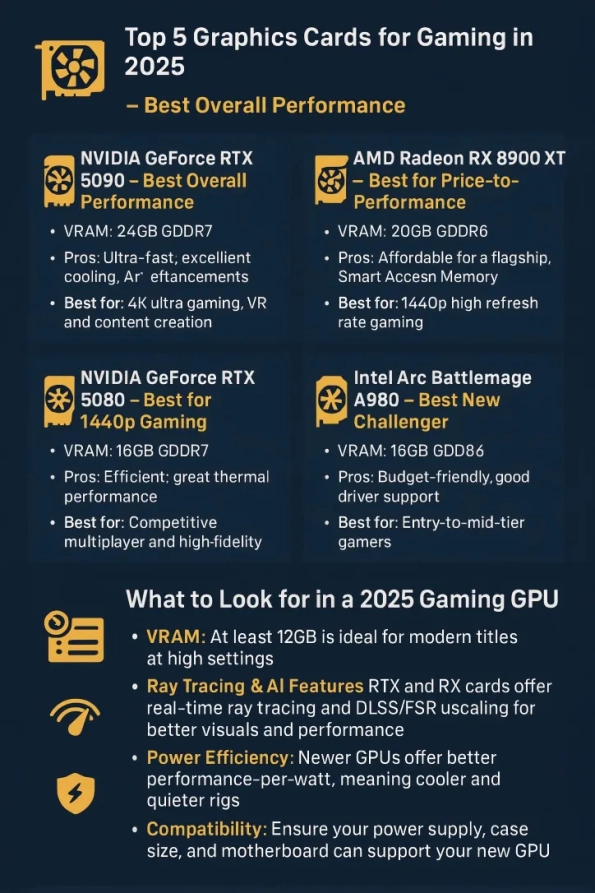
Best AMD Graphics Card 2025
| Model | 1440p Avg FPS | 4K Avg FPS | VRAM | Power (W) | FSR 3.1/4.0 Support | Price (USD) |
| RX 9070 | 165 | 81 | 16GB | 220 | FSR 3.1 & 4.0 | $549 |
| RX 9070 XT | 163 | 94 | 16GB | 304 | FSR 3.1 & 4.0 | $599 |
New high-definition games work best with the AMD RX 9070 and RX 9070 XT, which are both based on RDNA 4. The GPUs are equipped with 16GB of GDDR6 VRAM, support Mantle Raytracing and also include second-generation AI accelerators.
They are made for next-generation gaming at 4K and 1440p. As fast as 81 frames per second at 4K and an amazing 165 frames per second at 1440p, the RX 9070 has often beaten the RTX 5070 in common raster-based games.
High-End GPU – RTX 5080
| Metric | RTX 5080 | RTX 4080 Super | RTX 5090 |
| CUDA Cores | 10,752 | 9,728 | 21,760 |
| VRAM | 16 GB GDDR7 | 16 GB GDDR6 | 32 GB GDDR7 |
| Boost Clock | 2.62 GHz | ~2.5 GHz | 2.41 GHz |
| Ray Tracing Performance | +14% vs 4080 Super | Baseline | +70% vs 5080 |
| 4K Gaming FPS (DLSS 4) | ~171 fps (Forza 5) | ~146 fps | ~210+ fps |
| Power Consumption | 360W | ~291W | 575W |
| Price | $999 | ~$1,199 | $1,999 |
The Nvidia 5080 GPU, as the best high-end GPU for 4K users, includes 10,752 CUDA cores and 16GB of groundbreaking GDDR7 memory with a 256-bit bus.
In terms of raytracing, it is 14% higher than the 4080 Super, and with the multi-frame generation technology of DLSS 4.0, it can achieve 171 fps in heavy 4K games like “Forza Horizon 5”.
Intel Arc B580: the best Budget-Friendly GPU
| GPU | VRAM | 1080p Avg FPS | 1440p Avg FPS | Ray Tracing (1440p) | AI Upscaling | AV1 Encode | MSRP |
| Intel Arc B580 | 12GB | 82 | 56 | 75 (RE4) | XeSS 2 | Yes | $249 |
| RTX 4060 | 8GB | 69 | 46 | 63 (RE4) | DLSS 3 | Yes | $299 |
| RX 7600 | 8GB | 63 | 47 | 65 (RE4) | FSR 3 | No | $269 |
In fact, the Intel Arc B580 is $249. So go and hit the buy button with peace of mind.
After testing, we concluded that the B580, with its wide 192-bit bus and 12GB of GDDR6 memory, can compete with the RTX 4060 and RX 7600 and may even surpass them in the future. In actual game benchmarks, the B580 consistently outperforms the RTX 4060 and RX 7600.
This means the B580 is easily the best card by quite some margin in its price bracket, even when it’s 4K we are talking about.
Nvidia 4060 – Best Entry-Level GPU Card
The RTX 4060 completes it. Just solid 1080p gaming; no flashy specs, no empty promises. Using high settings without my PC sounding like a jet engine, I have pushed Spider-Man Remastered at 130 FPS. Only 110W draw? Yes, that is the true nature of efficiency. For the worst frame pace, my roommate’s RX 7600 chugs more power.
Tight by 2025 norms of 8GB VRAM. Try modding Cyberpunk and you’ll find dial-up connection-like textures loading. But DLSS 4.0 saves its bacon; hit that toggle and see how your fps rises while ray tracing is essentially still usable. Not magic, only clever artificial intelligence cheating.
I would buy my young brother a card for $299. Does it guarantee future-proofness? No, Hell. Does it crush Fortnite/Apex/Warzone today, leaving cash for decent RAM? Surely. The drivers in NVIDIA are good; they fit shoebox-sized constructions, and frankly? “Good enough” is exactly enough occasionally.
Best Integrated GPUs (iGPUs)
| iGPU Platform | Notable Model | Cores/Threads | Graphics Engine | AI Acceleration | Power (TDP) | Key Advantage |
| AMD Ryzen 7000/9000 | Ryzen 9 9950X | 16C/32T | Radeon 2C @ 2200MHz | Yes (AI NPU) | 170W | Top multi-core & gaming iGPU |
| Intel Core Ultra 200V | Ultra 9 285K | 24C/24T | Arc 140V | Yes (NPU, Xe) | 125W/250W | Leading AI, strong gaming |
| Intel Core i5-12600K | i5-12600K | 10C/16T | UHD Graphics 770 | No | 125W | Best budget iGPU |
Next-generation PC CPUs are rewriting the script; integrated graphics are not only for spreadsheets now. Proving it are Intel’s Core Ultra 9 285K and AMD’s Ryzen 9 9950X. Because the artificial intelligence is handling the heavy work, both pack enough punch for 1080p PC games and even heavy creative output now. Was I then when I tested Hogwarts Legacy on the Arc 140V iGPU of the Ultra 9? Though not perfect, it is shockingly playable.
With their Arc-based chips, Intel at last figured out the code. That increase in 25% frame rate? Realistic. While Genshin Impact, my old gaming laptop with last-generation integrated graphics, wheezed through, this does not. Here, the tip is energy efficiency. Less stutter, less “why did I cheap out on a GPU?” regret, and less fan noise.
The following explains why this is important: While games and artificial intelligence applications keep demanding more, laptops and mini PCs are not getting bigger. The bridge that divides with integrated graphics. 9.5% annual market increase? Makes sense. People want portability without having to sell a kidney for an upscale GPU. As it happens, you can get reasonable battery life and fps. Simply don’t expect miracles or 4K.
Most Affordable Integrated GPU: AMD Radeon 780M
The AMD Radeon 780M isn’t here to show off; it’s here to do its job. That structure of RDNA 3? 12 computers running at speeds of up to 3 GHz. It’s not groundbreaking, but it’s good enough to get 40–53 frames per second in Cyberpunk 2077 at 1080p (low to medium, of course). Surprisingly, it handles Night City without melting down when I tested it.
AMD Radeon 780M works well with mini PCs and laptops at 35–54 W. That number makes my Steam Deck laugh, but hey, you’re not buying this for 4K glory, are you? Want to play The Witcher 3 on a thin and light while you’re in the air? Done. The battery life stays the same. Don’t expect ray tracing to do magic, though.
This is where FSR support comes in handy. When you optimise it for Vulkan and DX12, integrated graphics suddenly feel… possible. It’s not groundbreaking, but it’s a good, cheap option. It looks like AMD’s message is clear: “Can’t afford a separate GPU? Okay. We’ll meet you in the middle.
AMD Radeon 890M is a Powerful iGPU
The Radeon 890M from AMD isn’t messing around. How does RDNA 3.5 work? Check it done, 16 units of computing? It easily reaches 2.9 GHz. It tested the same as the GTX 1650 Ti in Elden Ring at 1080p medium, which is crazy for built-in graphics. How to improve Vulkan/OpenCL? It lets it play games and edit photos at the same time, like a well-oiled machine.
Power savings are what really matter. This thing drinks juice and chews through Blender renders and Stable Diffusion workflows. Don’t get rid of your RTX 4090 just yet, but for thin and light? Changes the game. Fans barely spoke as they watched it keep up with Helldivers 2 on a Zenbook Slim.
In short, iGPUs have just become better. With the 890M, you can get rid of bulky laptops without giving up playable frames per second. Is it great? Nope. But when do built-in graphics start to get close to mid-range GPUs? We need to change our idea of “good enough”.
Final Thoughts: Which one should you choose?
When you choose a GPU, ask two questions first: “What do I really play?”, “Will this bankrupt me?” also asked RTX 5070 from Nvidia nails DLSS 4.0; that artificial intelligence upscaling keeps frames smooth even in cases of hardware sweating. AMD’s RX 9070 counters, though, have more VRAM and less power draw. Rough call.
At the bleeding edge? The RTX 5080 owns 4K games; if you have extra money to burn, look at Intel’s Arc B580 or the reliable RTX 4060 if you are budget-conscious. 890M iGPU by AMD. Tested it on a mini PC that runs Hades and GTA V without requiring a dedicated card. wild times.
Aim for 16GB VRAM minimum at last. DLSS/FSR 3.1 are now more of a life support for ageing GPUs than luxuries.



